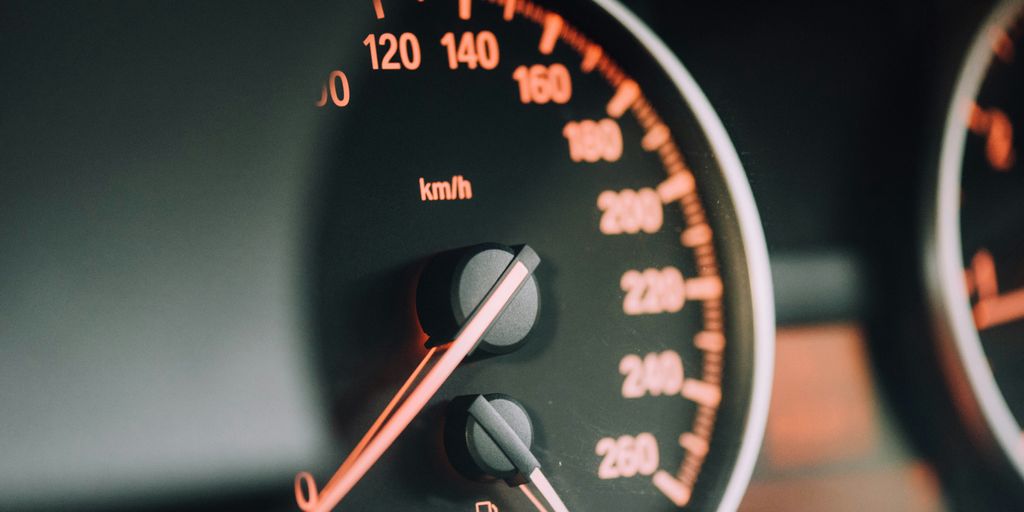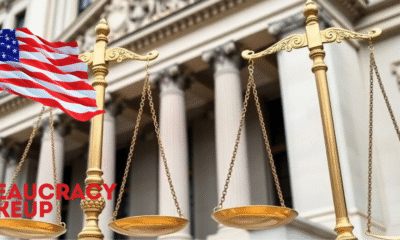Automotive
Car Leasing Options: Making the Right Choice

Leasing a car can be a great option for many drivers, offering flexibility and lower monthly payments compared to buying. However, it’s important to understand the ins and outs of leasing before making a decision. This article explores the various aspects of car leasing, from benefits and drawbacks to key terms and negotiation tips, helping you make an informed choice.
Key Takeaways
- Leasing allows you to drive a new car for less money each month, but it comes with mileage limits and fees.
- Knowing what happens at the end of your lease is vital, including any fees and options to buy the car.
- Be careful not to make common mistakes, such as overpaying upfront or neglecting maintenance.
- Leasing may require higher insurance coverage, so consider these costs before signing.
- Always compare different leasing offers to find the best deal that suits your budget.
Understanding Car Leasing Options
What is Car Leasing?
Leasing a car is like renting it for a set period, usually between two to three years. You get to drive a new vehicle without owning it. At the end of the lease, you return the car or have the option to buy it. This arrangement allows you to enjoy a new car without the long-term commitment of buying.
How Car Leasing Works
When you lease a car, you agree to pay for its depreciation during the lease term, plus interest and fees. Here’s a simple breakdown of how it works:
- Choose a Car: Decide on the make and model you want.
- Negotiate Terms: Discuss the lease duration, mileage limits, and monthly payments.
- Sign the Lease: Finalise the agreement and make any upfront payments.
Types of Car Leases
There are mainly two types of car leases:
- Closed-End Lease: You return the car at the end of the lease with no further obligations, as long as you meet the terms.
- Open-End Lease: You may have to pay the difference if the car’s value is less than expected at the end of the lease.
| Type of Lease | Description | Pros | Cons |
|---|---|---|---|
| Closed-End Lease | Return the car with no further obligations. | Simplicity and predictability | Potential mileage penalties |
| Open-End Lease | You may owe money if the car’s value is lower than expected. | Flexibility | Uncertainty in costs |
Leasing can be a great option for those who prefer driving a new car every few years, but it’s essential to understand the terms and conditions before signing a lease.
In summary, understanding car leasing options can help you make an informed decision. Whether you choose to lease or buy, knowing the ins and outs of leasing will ensure you get the best deal possible. Remember, researching your options is key to a successful leasing experience!
Benefits of Car Leasing

Leasing a car can be a smart choice for many drivers. Here are some of the main advantages:
Lower Monthly Payments
One of the biggest benefits of leasing is that monthly payments are usually lower than those for buying a car. This means you can drive a better car for less money each month. For example:
| Car Type | Buying Payment | Leasing Payment |
|---|---|---|
| Compact Car | £300 | £200 |
| SUV | £450 | £350 |
| Luxury Vehicle | £600 | £450 |
Access to Newer Models
Leasing allows you to drive a new car every few years. This means you can enjoy the latest features and technology without the hassle of selling an old car. You’ll also benefit from:
- Manufacturer warranties
- New safety features
- The latest fuel efficiency
Reduced Maintenance Costs
When you lease, you often drive a car that is still under warranty. This can save you money on repairs and maintenance. Many leases even include free scheduled maintenance, which can cover:
- Oil changes
- Tyre rotations
- Brake inspections
Leasing can be a great option for those who want to drive a new car without the long-term commitment of buying. It offers flexibility and lower costs, making it appealing for many drivers.
In summary, leasing a car can provide lower payments, access to newer models, and reduced maintenance costs, making it an attractive option for many drivers.
Drawbacks of Car Leasing
Leasing a car can seem appealing, but it comes with several disadvantages that you should consider:
Mileage Restrictions
Most leases have a limit on the number of miles you can drive each year, typically between 10,000 to 15,000 miles. If you exceed this limit, you’ll face hefty penalties, which can range from 10 to 50 pence per extra mile. It’s essential to estimate your driving habits before signing a lease.
Wear and Tear Charges
When you return a leased car, it must be in good condition. If there are signs of excessive wear and tear, you may incur additional charges. This can be a concern if you have kids or pets that might cause damage.
No Ownership Equity
At the end of the lease, you don’t own the car. This means you won’t have any asset to sell or trade in, unlike when you buy a car. You’ll be left with no value after making payments for years.
Additional Costs
Leasing can also involve various upfront costs, such as:
- Down payment
- Security deposit
- Acquisition fees
These can add up quickly, making leasing more expensive than it initially appears.
Leasing may seem cheaper at first, but hidden costs can make it more expensive in the long run.
In summary, while leasing offers some benefits, it’s crucial to weigh these drawbacks carefully before making a decision.
Comparing Leasing and Buying
Cost Comparison
When deciding between leasing and buying a car, the costs can vary significantly. Here’s a quick comparison:
| Aspect | Buying | Leasing |
|---|---|---|
| Ownership | You own the vehicle | You don’t own the vehicle |
| Up-Front Costs | Down payment, taxes, fees | First month’s payment, fees |
| Monthly Payments | Higher payments | Lower payments |
| Mileage | Unlimited | Limited (usually 10,000-12,000 miles/year) |
| Future Value | You keep the car’s value | No equity in the vehicle |
Flexibility and Commitment
- Ownership: When you buy, you can keep the car as long as you want.
- Payments: Leasing often means lower monthly payments, but you’ll always have a payment.
- Mileage: Leases come with mileage limits, which can be restrictive for some drivers.
Long-Term Financial Impact
- Buying: You build equity over time, and once the loan is paid off, you own the car outright.
- Leasing: You may end up in a cycle of payments without ever owning a vehicle.
In summary, the choice between leasing and buying depends on your personal needs and financial situation. Consider your driving habits and how long you plan to keep the vehicle before making a decision.
Key Terms in Car Leasing
Gross Capitalised Cost
The gross capitalised cost is the total price of the vehicle you are leasing. This includes the car’s price, taxes, and any additional fees. It directly affects your monthly payments and the buyout price at the end of the lease.
Residual Value
The residual value is the estimated worth of the car at the end of the lease term. This figure is crucial as it determines how much you would pay if you decide to buy the car after the lease ends. A higher residual value usually means lower monthly payments.
Money Factor
The money factor is essentially the interest rate for your lease. It indicates how much you will pay to lease the vehicle. To convert it to an annual percentage rate (APR), multiply the money factor by 2400.
| Term | Description | Impact on Lease Payments |
|---|---|---|
| Gross Capitalised Cost | Total cost of the vehicle including fees and taxes | Higher cost = higher payments |
| Residual Value | Estimated value of the car at lease end | Higher value = lower payments |
| Money Factor | Interest rate for the lease | Lower factor = lower payments |
Additional Terms to Know
- Mileage Allowance: The maximum number of miles you can drive each year without incurring extra fees.
- Disposition Fee: A fee charged by the dealer for preparing the vehicle for sale after the lease ends.
- Buyout Price: The amount you will pay if you choose to purchase the vehicle at the end of the lease.
Understanding these terms is essential for making informed decisions when leasing a car. Knowing the gross capitalised cost, residual value, and money factor can help you negotiate better deals and avoid unexpected costs.
Negotiating a Car Lease
Understanding Lease Terms
Negotiating a car lease can seem tricky, but it’s important to know that most terms are negotiable. Here are some key points to consider:
- Buyout price: This is what you’ll pay if you decide to buy the car at the end of the lease.
- Disposition fee: A fee for preparing the car for sale when you return it.
- Gross capitalised cost: This affects your monthly payments and the buyout price.
Tips for Negotiation
When you’re ready to negotiate, follow these steps:
- Do your research: Know the market value of the car you want.
- Visit multiple dealers: Compare offers from different places.
- Ask about all fees: Understand what you’ll owe at signing and throughout the lease.
Common Pitfalls to Avoid
Be aware of these mistakes:
- Not reading the fine print on the lease agreement.
- Assuming the monthly payment is fixed.
- Forgetting to ask about mileage limits and excess charges.
Remember, negotiating can save you money. Always compare offers and know what’s negotiable before sealing the deal!
Hidden Costs of Car Leasing
Leasing a car can seem like a great deal, but there are hidden costs that can add up quickly. Here’s what you need to know:
Upfront Costs
When you lease a car, you might face several initial expenses:
- Down payment: This is often required to start the lease.
- Security deposit: A refundable amount that protects the leasing company.
- Acquisition fee: A fee for setting up the lease, which can vary by dealer.
End-of-Lease Fees
At the end of your lease, you may encounter various charges:
- Disposition fee: This covers the dealer’s costs to prepare the vehicle for resale.
- Excess mileage charges: If you exceed the agreed mileage, you could pay up to 30 pence per extra mile.
- Wear and tear charges: If the car is not returned in good condition, you may face additional fees.
Excess Mileage Charges
Most leases come with a mileage limit, usually between 12,000 to 15,000 miles per year. If you exceed this limit, you could face hefty penalties. For example, if you drive 5,000 miles over the limit, you might owe an extra £1,500 at the end of the lease.
Understanding these hidden costs is crucial to avoid unexpected expenses when leasing a car. Always read the fine print and ask questions before signing any agreements.
Summary of Hidden Costs
| Cost Type | Description |
|---|---|
| Upfront Costs | Down payment, security deposit, acquisition fee |
| End-of-Lease Fees | Disposition fee, excess mileage charges, wear and tear charges |
| Mileage Limit Penalties | Charges for exceeding the mileage limit |
Leasing an Electric Vehicle
Benefits of Leasing EVs
Leasing an electric vehicle (EV) can be a smart choice for many drivers. One major advantage is the potential for significant tax credits. For instance, you might qualify for a $7,500 federal tax credit if you lease an EV, which is not always available when buying. This can make leasing more appealing financially.
Government Incentives
In addition to tax credits, there are other incentives for leasing EVs:
- Lower monthly payments compared to buying.
- Access to the latest technology without being stuck with outdated models.
- Flexibility to switch to a newer model every few years as technology improves.
Considerations for EV Leases
When considering leasing an EV, keep these points in mind:
- Mileage limits: Most leases have restrictions on how many miles you can drive each year.
- End-of-lease fees: Be aware of potential charges for wear and tear or excess mileage.
- Market changes: The value of EVs can fluctuate, so leasing can protect you from sudden drops in value.
Leasing an electric vehicle can provide financial benefits and flexibility, especially in a rapidly changing market.
Overall, leasing an EV can be a great option for those who want to enjoy the benefits of driving a new car without the long-term commitment of ownership. It allows you to stay updated with the latest advancements in electric vehicle technology while potentially saving money through various incentives.
Maintaining a Leased Car
Regular Maintenance Tips
To keep your leased car in good shape, follow these simple tips:
- Schedule regular oil changes to ensure the engine runs smoothly.
- Check tyre pressure monthly to avoid uneven wear.
- Keep the interior clean to prevent stains and damage.
Handling Repairs
If your leased car needs repairs, consider the following:
- Use authorised service centres to maintain warranty coverage.
- Document all repairs for your records.
- Address issues promptly to avoid further damage.
Preparing for Lease Return
As your lease term ends, make sure to:
- Inspect the car for damage and fix any issues.
- Clean the vehicle thoroughly inside and out.
- Review the lease-end condition guidelines to avoid extra charges.
Remember, keeping your car in good condition can save you from unexpected fees when returning it.
By following these steps, you can ensure a smooth return process and avoid any unnecessary costs associated with wear and tear. Maintaining your leased car is essential to enjoying the benefits of leasing without the stress of additional charges.
Who Should Consider Car Leasing?

Frequent Car Upgraders
Leasing is a great option for those who love to drive the latest models. If you enjoy having a new car every few years, leasing allows you to do just that without the long-term commitment of buying. You can enjoy the latest technology and features without worrying about depreciation.
Business Owners
For business owners, leasing can be beneficial. It often comes with tax advantages, allowing you to deduct lease payments as a business expense. This can help manage cash flow while providing reliable transportation for work.
Low Mileage Drivers
If you don’t drive much, leasing might be a smart choice. Many leases come with mileage limits, which can be suitable for those who only need a car for short trips. You can save money on monthly payments compared to buying, especially if you don’t exceed the mileage cap.
Summary
In summary, leasing can be ideal for:
- Those who prefer new cars frequently.
- Business owners looking for tax benefits.
- Drivers with low mileage needs.
Leasing offers a flexible way to enjoy a vehicle without the long-term commitment of ownership, making it appealing for various lifestyles.
Steps to Leasing a Car
Leasing a car can be a great option if you want to drive a new vehicle without the long-term commitment of buying. Here are the steps to help you through the process:
1. Researching Options
Before you start, do your homework. Think about the type of car you want and how much you can afford. Consider your driving habits and how the car fits into your lifestyle. Here are some points to consider:
- Determine your budget.
- Identify the make and model you prefer.
- Check for any special offers or incentives.
2. Visiting Dealerships
Next, visit a few dealerships to see the cars in person. This step is crucial for narrowing down your choices. When you visit:
- Take test drives to see how the car feels.
- Ask about availability and any current promotions.
- Consider bringing a friend for a second opinion.
3. Negotiating the Lease Terms
Negotiation is key in leasing. Almost every part of the lease can be discussed. Here are some important terms to negotiate:
- Gross capitalised cost: This is the price of the car.
- Mileage allowance: Make sure it fits your driving needs.
- Money factor: This is similar to the interest rate on a loan.
4. Comparing Offers
Once you have a few options, compare the offers. Look at:
- Monthly payments
- Fees associated with the lease
- Terms of the lease agreement
5. Maintaining the Car Throughout Your Lease
Finally, remember that you need to keep the car in good condition. This will help avoid extra charges when you return it. Here are some maintenance tips:
- Follow the service schedule recommended by the manufacturer.
- Keep the car clean and free of damage.
- Understand the wear-and-tear guidelines to avoid penalties.
Leasing a car can be a smart choice if you want to drive a new vehicle every few years without the hassle of ownership. Just make sure to follow these steps to ensure a smooth process!
Conclusion
In summary, choosing to lease a car can be a smart choice for many drivers, especially those who enjoy driving newer models without the long-term commitment of ownership. However, it’s essential to weigh the pros and cons carefully. While leasing often means lower monthly payments and the chance to drive a more expensive vehicle, it also comes with restrictions like mileage limits and potential extra fees for wear and tear. Before making a decision, do your research, compare different offers, and ensure you understand the terms of the lease. By taking these steps, you can find a leasing option that fits your lifestyle and budget.
-

 Business5 days ago
Business5 days agoS&P 500 Soars in Best May in Decades Amid Tariff Relief and Nvidia’s Surge
-

 Healthcare7 days ago
Healthcare7 days agoAttention Economy Arms Race: Reclaim Your Focus in a World Designed to Distract You
-

 Immigration5 days ago
Immigration5 days agoTrump’s Immigration Crackdown: Legal Battles and Policy Shifts
-

 Business5 days ago
Business5 days agoUS Stock Market Soars in May Amidst Tariff Tensions and Inflation Worries
-

 Government5 days ago
Government5 days agoTrump Administration’s Government Reshaping Efforts Face Criticism and Legal Battles
-

 Business5 days ago
Business5 days agoTrump’s Tariffs: A Global Economic Reckoning
-

 Foreign Policy3 days ago
Foreign Policy3 days agoInside Schedule F: Will Trump’s Federal Workforce Shake-Up Undermine Democracy?
-

 Press Release2 days ago
Press Release2 days agoIn2space Launches Campaign to Make Space Travel Accessible for All






























